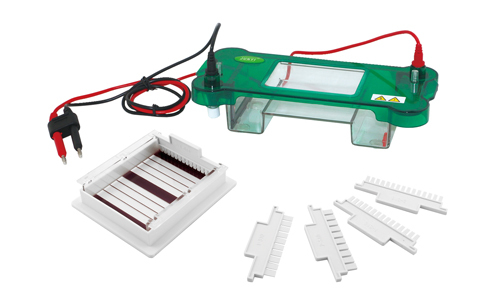Electrophoresis consists of a technique that allows the separation of biomolecules according to their mobility and nature in an electric field on a porous matrix, it is one of the most widely used molecular biology techniques in the laboratory. Since through electrophoresis we can separate DNA and RNA fragments based on their size, visualize them by means of a simple stain, and in this way determine the content of nucleic acids in a sample, being able to have an estimate of its concentration.
At present, the electrophoresis technique with its different modifications and complements is used daily to separate protein and nucleic acid molecules and is complemented by a wide variety of modern instruments that have increased its precision in the separation of these biomolecules, facilitating their handling. .
Where is electrophoresis performed?
The electrophoresis technique is carried out in equipment composed of a negative charge at one end and a positive charge at the other. By placing the charged molecules in this environment, the negatively charged ones will move to the positive end, and the positively charged ones to the other corresponding end. Electrophoresis uses the difference in size and charge of various molecules in a sample. The DNA, RNA or protein sample to be separated is loaded onto a porous gel placed in an ionic buffer environment. In the use of electrical charge, each molecule having different sizes and charge will move through the gel at different speeds.
Electrophoresis steps
- Obtaining the samples.
- Preparation of the gel
- Sample preparation with loading buffer
- Sample loading
- Gel run
- Gel staining
- Visualization of the gel with UV light and analysis of results
How is gel electrophoresis performed?
The gel used in gel electrophoresis is usually made from agarose or polyacylamide. This porous gel can be used to separate macromolecules of various sizes. The gel is immersed in a buffer solution in an electrophoresis chamber.
Electrophoretic mobility is the speed at which each molecule travels through the gel and is mainly determined by its net charge and size. Strongly charged molecules move faster than weakly charged ones. Smaller molecules also move faster.
Once the separation is complete, the gel is stained with a dye to reveal the separation bands. Ethidium bromide is a fluorescent dye commonly used in gel electrophoresis. The gel is soaked in a dilute ethidium bromide solution and then placed in a UV transilluminator to visualize the separation bands. The bands are immediately examined and photographed.
At Kalstein we are MANUFACTURERS of laboratory equipment and we offer you excellent electrophoresis systems at the best PRICES on the market, designed with the highest quality. That’s why we invite you to take a look at the Products menu. HERE


